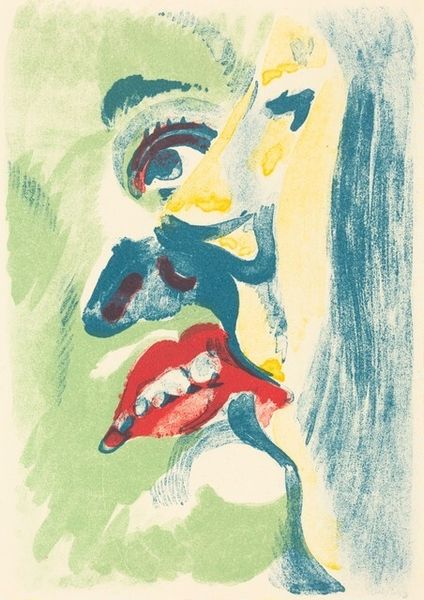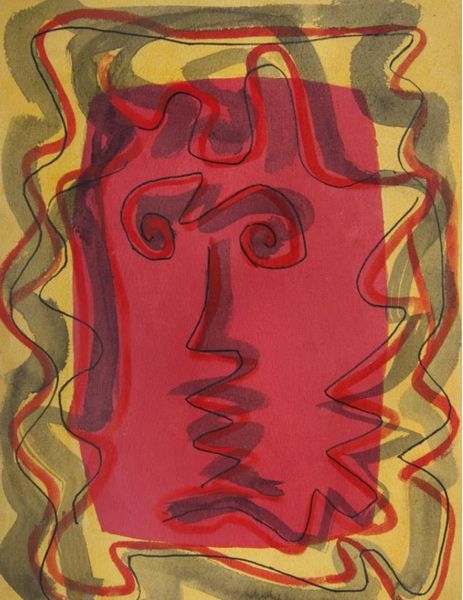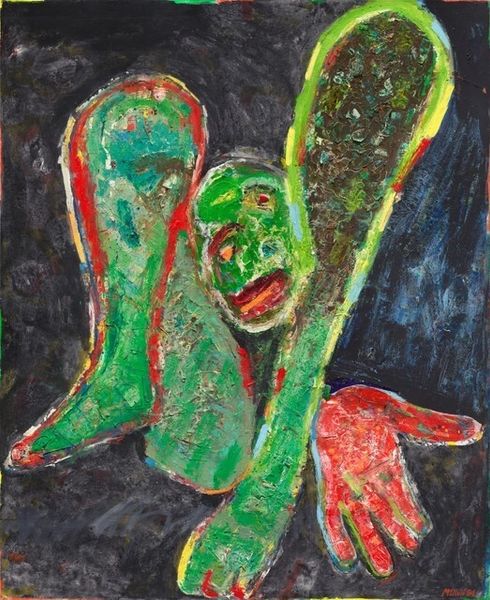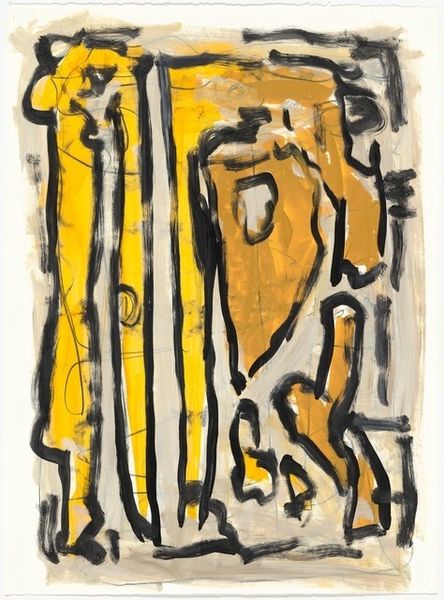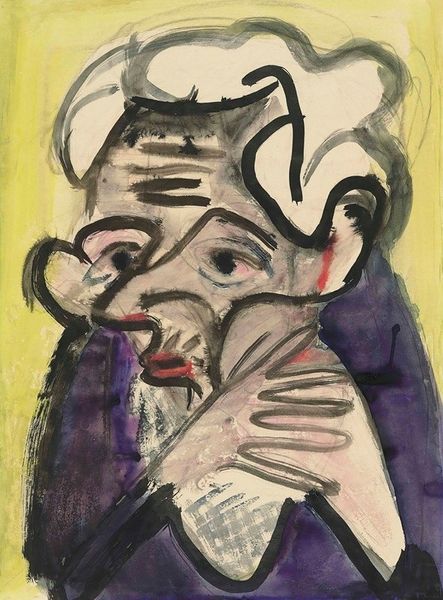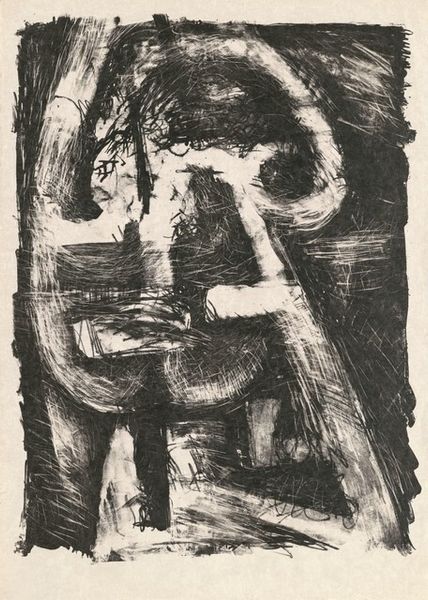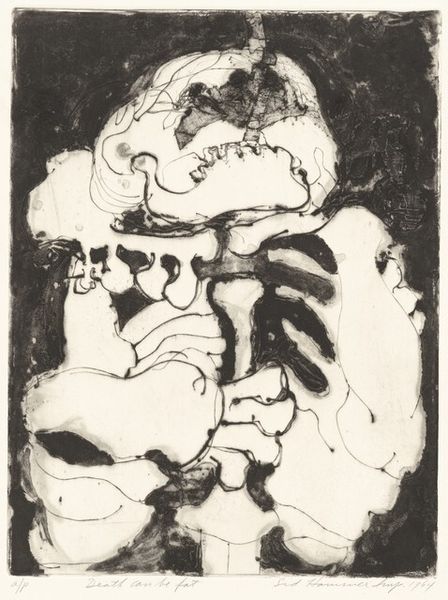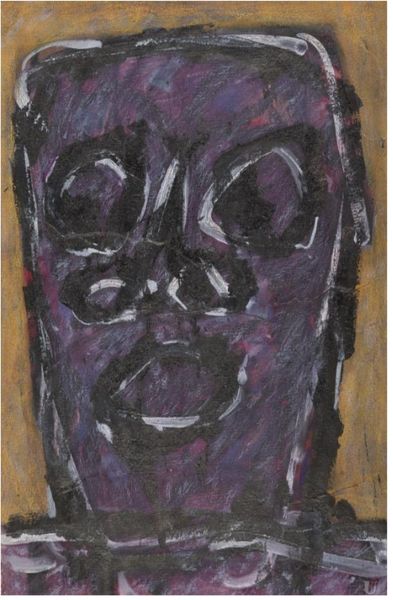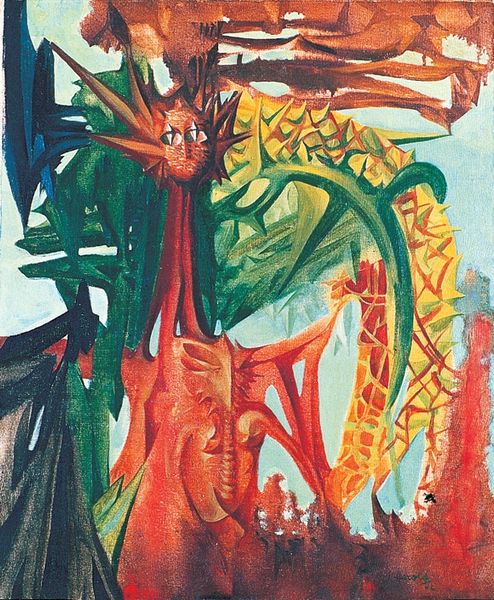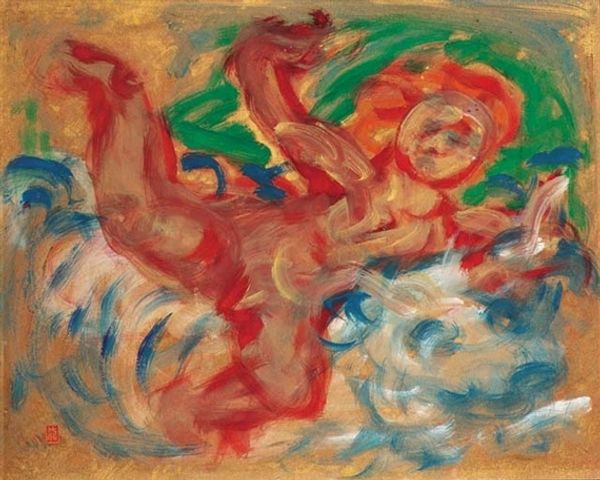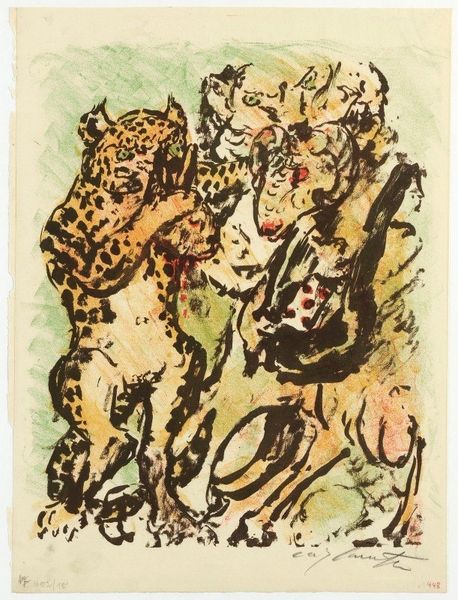
Dimensions: sheet: 75.57 × 56.52 cm (29 3/4 × 22 1/4 in.)
Copyright: National Gallery of Art: CC0 1.0
Editor: So, this is Thornton Dial's "Almanac - Time for Things to Grow" from 1992, done with watercolor and drawing. It's got these strange, almost dreamlike figures. What really strikes me is the blend of human and animal forms. What do you see in this piece? Curator: Immediately, I'm drawn to the confluence of potent symbols – the fish, a face, the lush foliage. Fish, of course, have always signified fertility, abundance, a connection to deeper currents, both literal and spiritual. How do these watery associations juxtapose with the directness of the gazes staring out at us? Editor: That's interesting. I hadn't thought about the fish as fertility symbols here, given their rather distorted forms. I was focusing on how the eyes of both the human and fish figures seem so wide and… knowing? Curator: Precisely. The knowing gaze. This work operates like a visual palimpsest. Consider "almanac" in the title: the passing of time, the agricultural cycle. And what grows? Not just plants, but awareness, knowledge, perhaps even wisdom hard-earned. Does that informed gaze change your feelings on this piece at all? Editor: I think so. It adds a layer of almost… witnessing? Like the figures are observers of some ongoing process, both natural and perhaps social or personal. I see so much symbolism here. It has a haunting quality. Curator: The "haunting" is the persistence of memory, cultural or personal. Dial is connecting us not just to an idea of growth, but to the deep-seated symbols that carry emotional weight across generations. Do you see it as an optimistic image? Editor: It feels hopeful but laced with some anxiety, perhaps reflecting the struggle inherent in growth. This piece made me look at common symbols differently. Curator: It’s precisely that re-evaluation that makes Dial's work so compelling. Recognizing the old in the new and understanding that progress and symbols are interwoven.
Comments
No comments
Be the first to comment and join the conversation on the ultimate creative platform.

